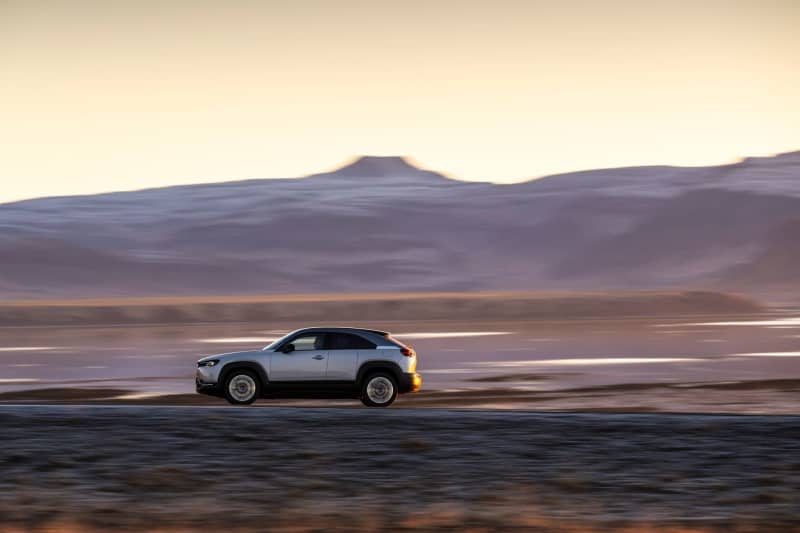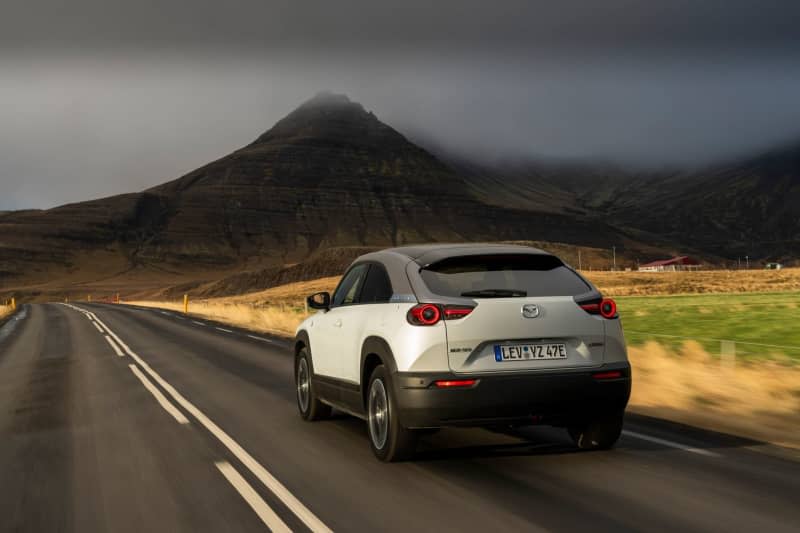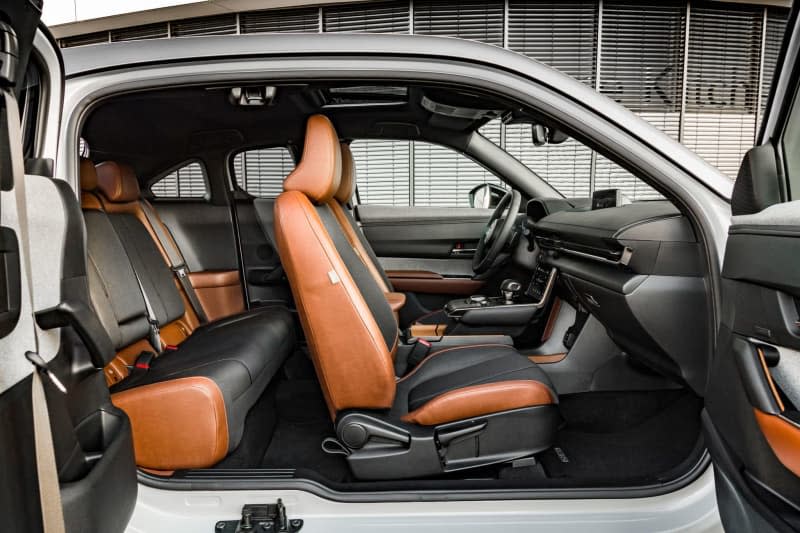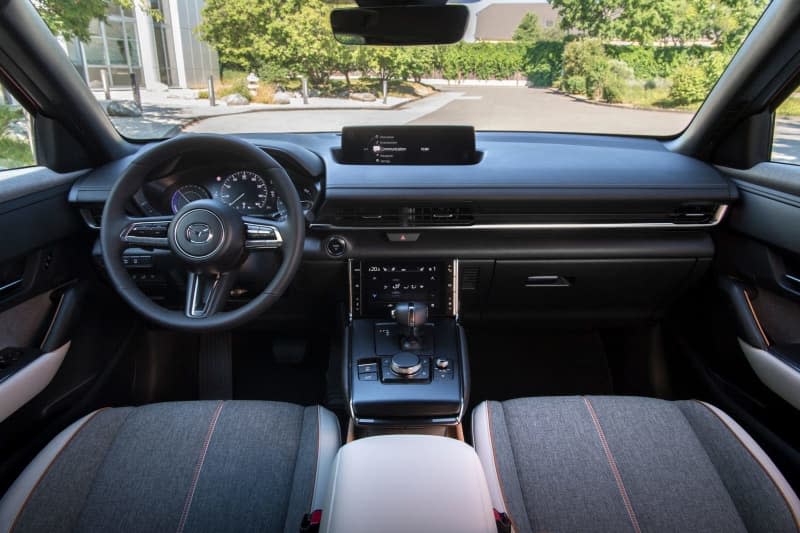MX-30 R-EV offers plenty of pep and a rare Wankel range extender
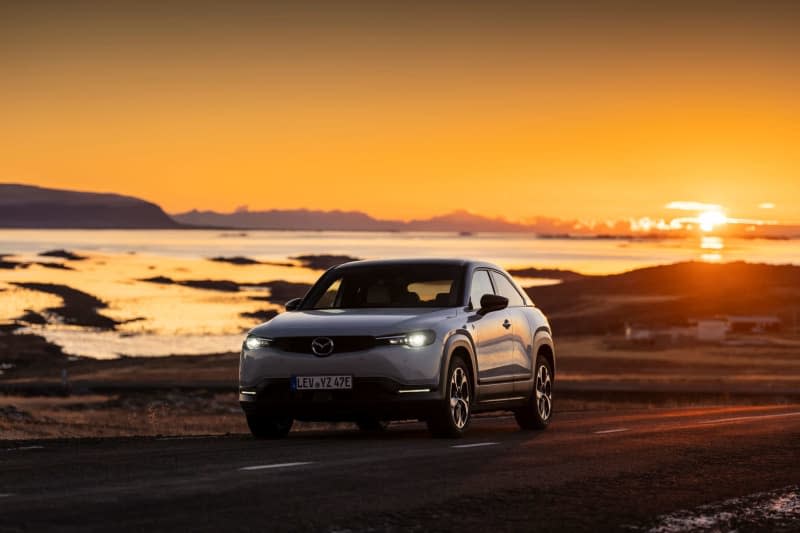
Once again Mazda lives up to its reputation as a brand for unconventional solutions. Proof is the new electric MX-30 R-EV equipped with a range extender powered by a Wankel engine.
This rotary piston engine was junked by every other car manufacturers decades ago and only Mazda remains loyal to the technology.
It has however been over 10 years since the Japanese last built a production car with a Wankel motor.
That was the RX-8 sports car which was dropped for the 2012 model year without a successor. It was taken off the European market two years earlier after the car failed to meet emissions standards.
The Japanese are also breaking with convention in their pricing policy by offering the upgraded model for the same €35,990 as the battery-only version. There are now two motors on board and the range is more than three times as generous at just under 700 kilometres.
To make room for a 50-litre fuel tank, Mazda has reduced the battery from 35.5 kWh to 17.8 kWh. This means that only around 80 kilometres of purely electric driving are possible but long before the batteries are depleted, the Wankel cuts in.
This single-disc rotary engine with a 0.8 litre combustion chamber delivers 55 kW/75 hp. Lightweight and smooth-running, it drives a generator at constant speed levels to produce electricity - making it a serial plug-in hybrid.
The feature extends range by a further 600 kilometres. The driver even has a say in how the two motors interact - by starting the charging process manually, pleasing the neighbours by cutting engine noise or specifying certain residual values for the required range, for example.
This hardly affects driving performance, even if the electric motor now has 125 kW/170 hp instead of the previous 106 kW/145 hp. The MX-30 takes 9.1 seconds to accelerate from 0 to 100 km/h, and top speed is 140 km/h in both cases.
On the road, the car does feel distinctly different. Firstly, because there is no longer a mechanical connection between the engine and the wheels and it hums when driving. And secondly, because the driver is no longer staring nervously at the range indicator and instead feels confident enough to set off on long journeys.
With 11 kW from an AC wall-box and 35 kW at the DC column, the charging capacity is moderate but petrol for the range extender is swiftly taken on board. Electric driving has rarely been so relaxed.
The unusual drivetrain is a perfect match for the MX-30, because regardless of whether it has a battery-only set-up or an additional petrol tank - the 4.40-metre-long compact is one of the most unconventional electric cars on the market.
The plug-in version of the petrol-powered CX-30 has no racy grille, the headlights look smaller and more innocent with ring-shaped "angel eyes." The muscular silhouette and haunched stance of the CX-3 have given way to a curved and deeply sloping rear hatch.
Like the old BMW i3, the Mazda has two doors in the rear that are hinged against the direction of travel. Oddly, these can only be opened when the front door is also open. This is a tad impractical because you always need two free hands and lots of space in the parking slot.
Operation of the car is a little idiosyncratic too. There are the customary digital instruments, a head-up display and a screen although the cockpit is decidedly old-school with its leather and cork trim.
The screens are unusually small compared to the new competition - especially from China - and also easily smudged with fingertips: Where others are incorporating more and more touch technology, the Japanese still have a classic rotary push-button control.
When on the move, the Mazda refrains from any flamboyance - instead it nods in the direction of the MX-5 roadster in terms of no-nonsense practicality.
Handling is crisp and precise and the MX-30 is much more fun to drive than many a lumbering SUV. Assistance systems in many Asian newcomers are often more irritating than useful so it is nice to see that here they remain pleasantly in the background.
The Wankel engine as range extender, the old-fashioned operating system and the off-beat body design mark out the Mazda as a non-conformist. The features also make it stand out from the electric crowd and the reassuring Wankel back-up could tempt buyers unwilling to commit to a full-electric.
